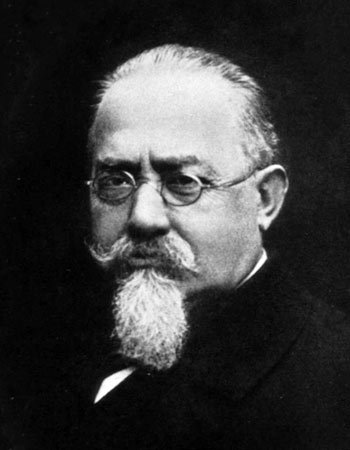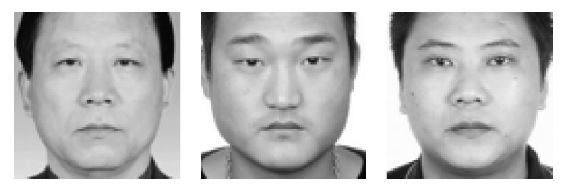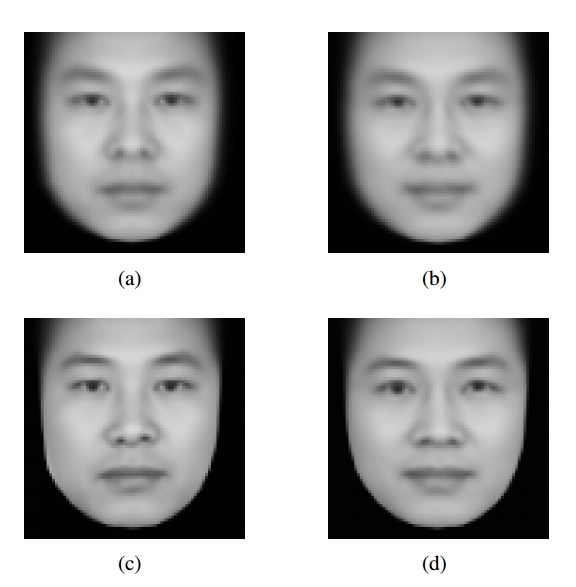Chinese scientists have taught the neural network to recognize criminals from photographs
Soon after the invention of photography, some forensics began to notice similarities in the photographs of criminals made after the arrest. According to their words, criminals are united by common features by which they could be attributed to offenders. Modern scientists have tried to prove this theory using the capabilities of artificial intelligence.
 An ardent supporter of anthropological theory was the famous Italian forensic scientist Cesare Lombroso. He believed that the criminals were more like law-abiding citizens, like anthropoids. He was convinced that it was possible to identify monkey features: a sloping forehead, the specific structure of the auricles, various asymmetries of the face and long arms. To prove his point, he conducted many measurements, although he did not do a statistical analysis of these data.
An ardent supporter of anthropological theory was the famous Italian forensic scientist Cesare Lombroso. He believed that the criminals were more like law-abiding citizens, like anthropoids. He was convinced that it was possible to identify monkey features: a sloping forehead, the specific structure of the auricles, various asymmetries of the face and long arms. To prove his point, he conducted many measurements, although he did not do a statistical analysis of these data.
This omission eventually ruined his theory. English forensic scientist Charles Goring has denied the views of Lombroso. He analyzed all the information related to the physical abnormalities of criminals and law-abiding citizens, and did not find any statistical regularity.
Since then, discussions on this topic have subsided until 2011. Then a group of psychologists from Cornell Universitydemonstrated that people are able to distinguish criminals from other people by simply looking at their photos. How was this possible?
Xiaolin Wu and Xi Zhang from Shanghai Transport University tried to answer this question. Scientists used various machine vision algorithms to study the faces of criminals and law-abiding citizens, and then checked whether the machine can detect the difference. They used 1856 photographs of Chinese aged 18 to 55 years. Half of them are criminals. Then the scientists took 90% of all the photos and taught the convolutional neural network to recognize the difference. The remaining 10% of the images went for tests.

Faces of criminals

Faces of law-abiding citizens
Wu and Zhang found that the neural network can identify the perpetrator with an accuracy of 89.5%. “These consistent results are proof of the legitimacy of the automated identification of the perpetrator, despite the historical contradictions surrounding this topic,” they say.
According to scientists, there are three facial features by which a neural network identifies a person as a criminal. Compared to people who have not committed an offense, criminals have a 23.4% more curved upper lip, a 6% less distance from one inner corner of the eye to the other, and an angle between the two lines from the tip of the nose to the corners of the mouth - 20 % smaller.
In their work, researchers demonstrate that these data sets are concentric, but criminal data have much more variance. In other words, there are more similarities between the faces of law-abiding citizens compared to the faces of criminals. Or criminals have a higher degree of difference in appearance than other people.
Their work explains why the results of some statistical tests make it difficult to see the difference between the two data sets. When Wu and Zhang combined all the portraits of the criminals and all the other portraits to create two “middle” faces, they were almost identical.

“Middle” persons: A (criminal) and B (ordinary person), composed using the Eigenface algorithm; C (criminal) and D (ordinary person), compiled by averaging landmarks and deforming the image.
It cannot be said that the results of the work of Chinese scientists were unexpected. If people can do this, it’s not surprising that artificial intelligence can do the same. The main question is how people will take advantage of these AI capabilities. It’s easy to imagine how Chinese scientists can apply data sets such as photographs from driver’s licenses and passports. Thus, we can distinguish those people whom the
machine identifies as probable criminals, and then find out whether this is true.
The work also says: unlike an expert or a judge, the computer vision algorithm does not have subjective "baggage", emotions, prejudices about experience, race, religion, political beliefs, experience. He does not get tired, he does not need sleep or food. It really is. But this does not mean that machines cannot be biased. For example, Beauty.ai was positioned as the first international beauty contest in which participants were rated by artificial intelligence. As it turned out later, one of the evaluation criteria was ethnicity and skin color, for which he was sharply criticized. The results of the contest showed that AI preferred the fair-skinned contestants.
Naturally, the work of Chinese scientists needs a more serious justification and refinement. It is necessary to repeat the experiment with people of different ages, sex, ethnic groups and increase the number of data sets. This should help resolve some controversial issues. For example, Wu and Zhang believe that criminals can be divided into four subgroups, and law-abiding only three. Why it happens? And how will this algorithm work with other groups of people? At the same time, work raises important questions. If the result really stands up to criticism, then how to explain it? Why do criminals have much more deviations compared to ordinary people? How do people identify criminals? Is this an innate or acquired skill?
If scientists are able to answer these questions, then perhaps the work of scientists will give a new round to the development of anthropometry of a criminal or other nature.
The latest scientific work was published on arXiv.org ( ArXiv: 1610.09204 [cs.CV])
 An ardent supporter of anthropological theory was the famous Italian forensic scientist Cesare Lombroso. He believed that the criminals were more like law-abiding citizens, like anthropoids. He was convinced that it was possible to identify monkey features: a sloping forehead, the specific structure of the auricles, various asymmetries of the face and long arms. To prove his point, he conducted many measurements, although he did not do a statistical analysis of these data.
An ardent supporter of anthropological theory was the famous Italian forensic scientist Cesare Lombroso. He believed that the criminals were more like law-abiding citizens, like anthropoids. He was convinced that it was possible to identify monkey features: a sloping forehead, the specific structure of the auricles, various asymmetries of the face and long arms. To prove his point, he conducted many measurements, although he did not do a statistical analysis of these data. This omission eventually ruined his theory. English forensic scientist Charles Goring has denied the views of Lombroso. He analyzed all the information related to the physical abnormalities of criminals and law-abiding citizens, and did not find any statistical regularity.
Since then, discussions on this topic have subsided until 2011. Then a group of psychologists from Cornell Universitydemonstrated that people are able to distinguish criminals from other people by simply looking at their photos. How was this possible?
Xiaolin Wu and Xi Zhang from Shanghai Transport University tried to answer this question. Scientists used various machine vision algorithms to study the faces of criminals and law-abiding citizens, and then checked whether the machine can detect the difference. They used 1856 photographs of Chinese aged 18 to 55 years. Half of them are criminals. Then the scientists took 90% of all the photos and taught the convolutional neural network to recognize the difference. The remaining 10% of the images went for tests.

Faces of criminals

Faces of law-abiding citizens
Wu and Zhang found that the neural network can identify the perpetrator with an accuracy of 89.5%. “These consistent results are proof of the legitimacy of the automated identification of the perpetrator, despite the historical contradictions surrounding this topic,” they say.
According to scientists, there are three facial features by which a neural network identifies a person as a criminal. Compared to people who have not committed an offense, criminals have a 23.4% more curved upper lip, a 6% less distance from one inner corner of the eye to the other, and an angle between the two lines from the tip of the nose to the corners of the mouth - 20 % smaller.
In their work, researchers demonstrate that these data sets are concentric, but criminal data have much more variance. In other words, there are more similarities between the faces of law-abiding citizens compared to the faces of criminals. Or criminals have a higher degree of difference in appearance than other people.
Their work explains why the results of some statistical tests make it difficult to see the difference between the two data sets. When Wu and Zhang combined all the portraits of the criminals and all the other portraits to create two “middle” faces, they were almost identical.

“Middle” persons: A (criminal) and B (ordinary person), composed using the Eigenface algorithm; C (criminal) and D (ordinary person), compiled by averaging landmarks and deforming the image.
It cannot be said that the results of the work of Chinese scientists were unexpected. If people can do this, it’s not surprising that artificial intelligence can do the same. The main question is how people will take advantage of these AI capabilities. It’s easy to imagine how Chinese scientists can apply data sets such as photographs from driver’s licenses and passports. Thus, we can distinguish those people whom the
machine identifies as probable criminals, and then find out whether this is true.
The work also says: unlike an expert or a judge, the computer vision algorithm does not have subjective "baggage", emotions, prejudices about experience, race, religion, political beliefs, experience. He does not get tired, he does not need sleep or food. It really is. But this does not mean that machines cannot be biased. For example, Beauty.ai was positioned as the first international beauty contest in which participants were rated by artificial intelligence. As it turned out later, one of the evaluation criteria was ethnicity and skin color, for which he was sharply criticized. The results of the contest showed that AI preferred the fair-skinned contestants.
Naturally, the work of Chinese scientists needs a more serious justification and refinement. It is necessary to repeat the experiment with people of different ages, sex, ethnic groups and increase the number of data sets. This should help resolve some controversial issues. For example, Wu and Zhang believe that criminals can be divided into four subgroups, and law-abiding only three. Why it happens? And how will this algorithm work with other groups of people? At the same time, work raises important questions. If the result really stands up to criticism, then how to explain it? Why do criminals have much more deviations compared to ordinary people? How do people identify criminals? Is this an innate or acquired skill?
If scientists are able to answer these questions, then perhaps the work of scientists will give a new round to the development of anthropometry of a criminal or other nature.
The latest scientific work was published on arXiv.org ( ArXiv: 1610.09204 [cs.CV])
